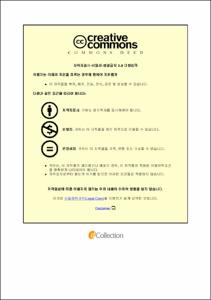그라비어 인쇄방식을 이용한 종이기반 유동기구(PFD)의 3차원 도전성 잉크 패터닝 방법에 관한 연구
- Abstract
- The gravure printing method uses a roll-to-plate or roll-to-roll method and can be done as an online process. There have been consistent attempts to apply this method to the manufacture of printed electronics due to fast printing rate. This printing method uses the principle in which only the printed area is stained with ink because of repulsive force between the two areas. However, since this method delivers ink from the plate cylinder to the printed object through a blanket, film thickness of transferred ink is only several micrometers and dot gain phenomenon occurs. The traditional offset lithography printing method have not been utilized well because of the problem in which ink is transferred irregularly to the surface of paper when the printed object is a paper. Therefore, the screen printing method is primarily used to manufacture printed electronics such as PCB(printed circuit boards), and the ink jet or gravure printing methods are applied to the manufacturing of some printed electronics. However, the most common screen printing method has problems like difficulty of roll-to-roll continuous work, slow printing speed, and damaging of substrate or pattern from irregular printing pressure. There are studies attempting to apply the ink jet printing method to the electronics production process despite many technical limitations, the ink jet printing technology is difficult to form high quality and high fidelity patterns and still faces limitations such as clogging of nozzles and lack of adhesive strength. Accordingly, this study aimed to apply the gravure printing method to the manufacturing of printed electronics in order to overcome problems of the screen and ink jet printing methods. The gravure printing method has somewhat inadequate resolution compared to other printing methods, and this study added a partition-making process that performs patterning on the paper using wax with extreme hydrophobicity. Unlike other printing methods introduced above, the wax patterning gravure printing (WPGP hereafter) method proposed in this study is a method of spreading hydrophobic paraffin on the surface of the non-printed area and increasing the amount of ink in the printed area to reinforce penetrating power and allowing conductive ink to sufficiently penetrate into the printed area. In addition, this method minimizes loss from pressure by using a blanket with high elasticity. In other words, the purpose of this study is to propose a new printing technology that accommodates for characteristics of diversifying printed electronics, reviewing the potential of the WPGP method and finding the optimal condition based on significant experimental results.
In present study, a conductive ink was printed using the WPGP method, with wax partition to manufacture various printed electronics, trying to find the possibility and optimal condition of the process. The following conclusions were drawn.
Although this study had limitations in resolution and penetration depth because commercial papers were used, the WPGP method can maximize the penetration effect of porous papers by applying appropriate printing pressure. Conseqently, it was discovered that resolution and quality can be greatly improved by using papers with uniform composition.
The WPGP method that prints on papers can be used to manufacture flexible printed electronics. It can exhibit outstanding conductivity and stability through 3-dimensional penetration of the ink compared to the conventional printing method that simply prints on the surface.
Accordingly, the WPGP method proposed in this study can be used as one of methods for the manufacture of printed electronics in the era of flexible printed electronics and wearable devices. Also, we hope this WPP study can help the development of fast and stable printed electronics process technologies.
- Issued Date
- 2018
- Awarded Date
- 2018. 8
- Type
- Dissertation
- Publisher
- 부경대학교
- Affiliation
- 부경대학교 대학원
- Department
- 대학원 인쇄공학과
- Advisor
- 윤종태
- Table Of Contents
- 목차 ⅰ
List of Figures ⅳ
List of Tables ⅶ
Abstract ⅷ
Ⅰ.서론 1
Ⅱ.이론적 배경 5
1.전극의 인쇄적성 이론 5
2.그라비어 인쇄적성 6
3.잉크의 종이 침투 이론 9
4.잉크 침투 깊이의 측정 13
5.종이와 잉크 사이의 계면장력 15
6.친수친유기평형 17
7.비저항과 전기전도도 18
Ⅲ.실험 19
1.실험 재료 19
1-1.도전성 수성 그라비어 잉크 19
1-2.PFD용 종이시료 21
1-3.소수성 재료 23
2.실험 장비 24
2-1.그라비어 인쇄적성시험기 24
2-2.접촉각 측정기 26
2-3.디지털 멀티미터 28
3.실험 방법 29
3-1.도전성 수성 그라비어 잉크의 제조 29
3-2.소수성 벽의 형성을 통한 3차원 패터닝 비교 실험 31
3-3.3차원 잉크 패터닝 33
3-4.그라비어 인쇄 적성실험 37
3-5.인쇄물의 농도 측정 38
Ⅳ.결과 및 고찰 40
1.도전성 수성 그라비어 잉크의 특성변화 40
2.왁스 및 실리콘 수지의 소수성 실험 결과 50
3.왁스 및 실리콘 수지의 침투 및 확산 차단효과 결과 54
3-1.침투속도 54
3-1-1. 실리콘 수지 54
3-1-2.왁스 56
3-2.차단효과 59
3-2-1.실리콘 수지 59
3-2-2.왁스 62
4.3차원 잉크 패터닝 인쇄 결과 65
4-1.왁스의 확산 결과 65
4-2.왁스 두께에 따른 확산과 인쇄적성 67
4-3.3차원 잉크 패터닝 방식 PFD 인쇄 69
5.전기저항 및 전기전도도 측정 결과 73
6.인쇄 조건에 따른 변화 75
6-1.인쇄 속도 변화에 따른 인쇄 농도 75
6-2.인쇄 압력 변화에 따른 인쇄 농도 76
6-3.셀 깊이 변화에 따른 인쇄 농도 77
Ⅴ.결론 78
참고 문헌 80
- Degree
- Doctor
- Files in This Item:
-
-
Download
 그라비어 인쇄방식을 이용한 종이기반 유동기구(PFD)의 3차원 도전성 잉크 패터닝 방법에 관한 연구.pdf
기타 데이터 / 2.03 MB / Adobe PDF
그라비어 인쇄방식을 이용한 종이기반 유동기구(PFD)의 3차원 도전성 잉크 패터닝 방법에 관한 연구.pdf
기타 데이터 / 2.03 MB / Adobe PDF
-
Items in Repository are protected by copyright, with all rights reserved, unless otherwise indicated.